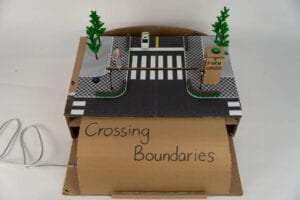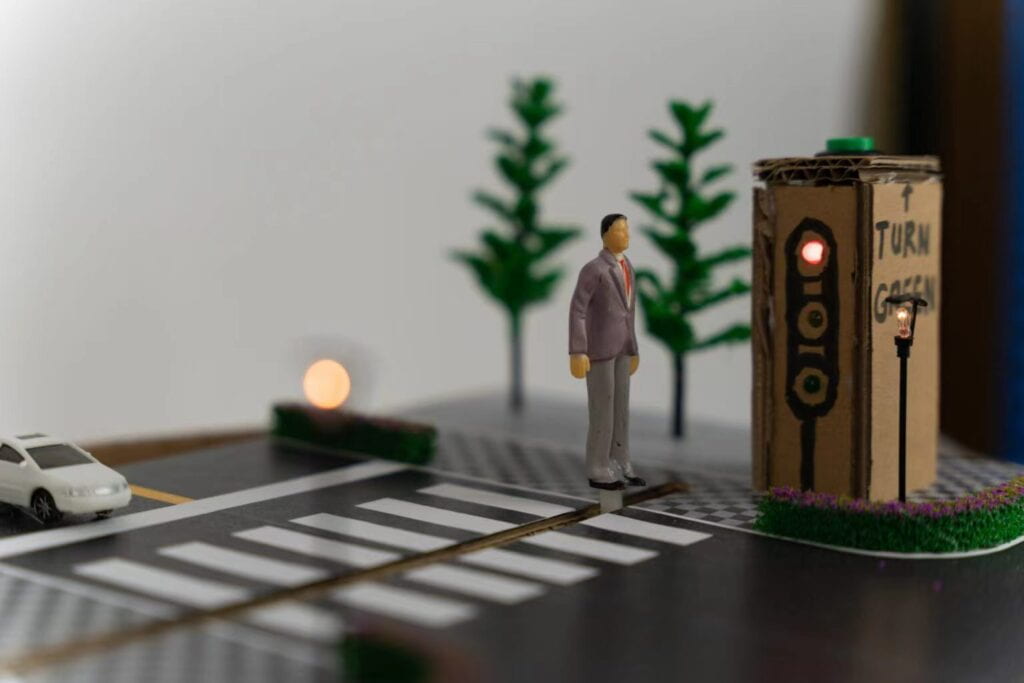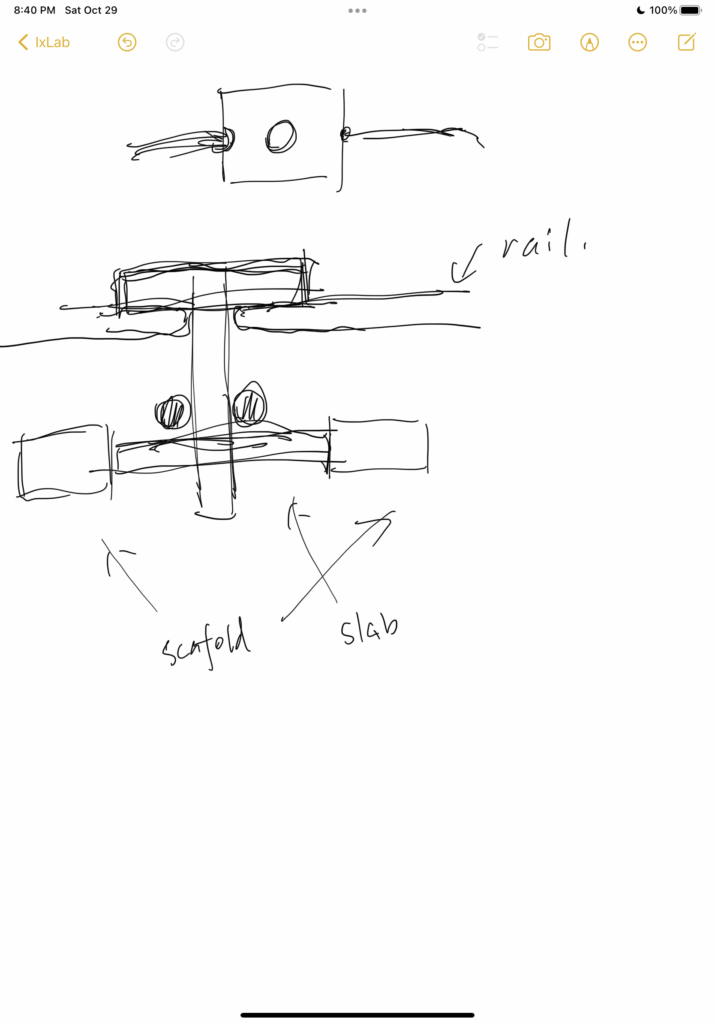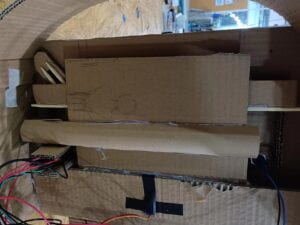Project Title: Boundaries Crossing
Artist: Andy Ye & Jason Xia
Instructor: Margaret Minsky

Concept:
All along the learning experience, I’ve been examining the multi-senses embeded in the interactive process. Interaction concludes input and output. Another sense taking part in will add a new dimension to the process. In my group research project, our “stepping stone” robot detects the inner silicon rate, patients’ behavior and responds with programmed languages. In the midterm project, we created a traffic light system adding sound signals to the traffic light messages and use button to simulate the intention of crossing the road. 
Another aesthetic design I learnt is the implement of mechanism. In recitation4, we built a piston that swifts motor’s rotation to linear movement, and in lecture I was impressed by Choe U-Ram’s ’”CUSTOS CAVUM” and the Sand Beast. The mechanism is a special language that ariculates how the machine is assemblied and functions. The simple levers, gears, rails combine together and have a aesthetic effect because they combine rationally. In our midterm project, we want to realize a long-distance linear movement using cardboard and motor.
Our midterm project is a scenario simulation when a disable person crosses the street, proposed by Andy. Users can change the traffic lights using one button and move a puppet using the other button. The mechine will move the puppet according to the traffic lights.
Fabrication:
The primary function we wanted to realize is the movement of puppet. We firstly decided to use a wire and an elastic string. The puppet can move when the motor pull the wire. We found some problems of this idea when we crafted it. We cannot find suitable meterial. The wire is not flexible enough and the elastic string (a tape from single use mask) cannot stretch that long. When I was crafting the rail, I crafted another and found that the combination of two rails might be the best idea for our project. I showed it to Andy and he thought it worked. (More details in our proposal: https://wp.nyu.edu/nyushanghai-jinhongxia/2022/10/18/midterm-project-proposal/
We analyzed the most important things we need to deal with are friction, rotation and pressure. In order to fix the puppet’s direction, we have to make a hidden slab with scaffold on both sides. We need to make sure the slab won’t rotate and get stuck because of the vertical force, and also don’t make the scaffold too close to reduce friction. These standards are hard to test until the mechanism is done.

We devided our works. Andy did the circuit, including soldering and coding. I made the physical structure. I framed the rail and arm with chopsticks to reduce the friction and increase the duability. The first design was good and tomorrow was user-testing.
When we did some art design right before the user-testing, something unexpected happened. The paint on the surface was sticky and the puppet would get stuck when moving. We had to loose the upper slab and lower slab. The puppet would rotate when moving but at least free from getting stuck.
User Testing:
We collected many feedbacks during the user testing. We observed that we lacked instruction on the function of buttons and the rule of traffic lights changing because some classmates pressed the button always so the traffic lights are always green. An LA told us if we want to simulate how the machine may help the disabled, we should think about the logic of notification, rather than bizzing when moving at the red light. Professor also told us that the art design was strange that users might confused about what it was.
Adaptation:
Andy bought some decoration from Taobao, including some trees, a car and a puppet. I draw a simulative road top view and Andy printed it out and pasted it on the surface. He also added two extra scaffolds under the slab so the puppet doesn’t attach to the surface. He also installed the buttons on the box and wrote instructions. I added a base and two hooks on it, so the circuit and breadboard united with the machine. The open hook structure allows us to make adjustment and repair when some wires detach. I also created a pipe to protect the mechanism from wires.

After the user-testing, we have more time to think about the logic on programing levels. We changed the logic of traffic lights changing. Now the traffic lights can change automatically. The button for lights can force the traffic lights turn green and reset the time if it’s already green. The idea behind is that the disable can press the button before they cross the road giving them enough time.
Presentation and Conclusion:
It spent a lot of time to design a mechanism and bring it into reality without crash. At least when we saw users were amazed when seeing the puppet move smoothly, it’s all worth it. We have to concede that our project lacks enough interactivity. The logic behind is quite simple and there’s not so much fun playing with it. The project is just a simulation of road crossing. Though we did some improvement to make it more reasonable, it’s still too imaginary to embed it into the real life. Looking back on our fabrication, designing part was the most time-consuming. Much too often I sat in front of the table with ideas in mind but wondering the size, the materials, the quantities of a piece of cardboard. The project came out with specific features and obvious looking, but every part, the length, the width, the surface,etc are carefully designed. Having this kind of experience reminds me to think about details, or take a designer’s perspective to comment on other artists’ porject.
Leave a Reply